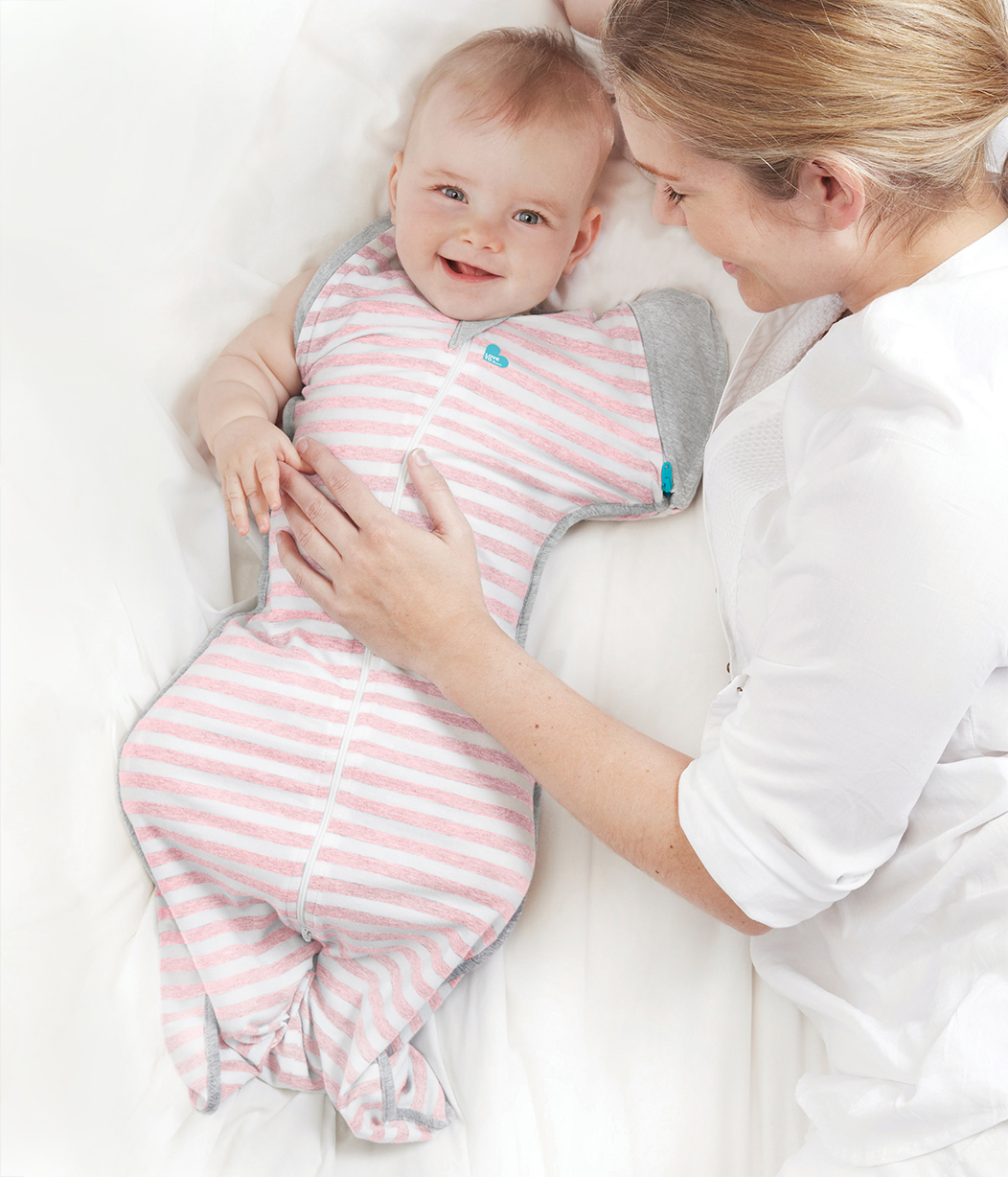How and When to Stop Swaddling
If you’ve spent months swaddling your newborn, got you both into a successful sleep routine, and are watching your baby grow, you may be wondering why you would stop swaddling. If it’s working, why break the habit?

It is important to know when it is time to move into arms-free sleep for your baby’s safety, and in doing this, not disturbing that precious quality sleep pattern you’ve worked so hard on.
The most important tell-tale sign that your baby is ready to move on from swaddling is rolling over.
Babies can start rolling over usually from around 4 months old*. They will show you they are ready to try this by rocking side to side when placed on their backs, and possibly reaching over with their arms to try and propel themselves to the side. By six months, most babies have this mastered, and can successfully go from their backs to stomach unassisted. Yay!
This amazing progress, however, means that it is no longer safe for them to be sleeping with their arms restricted. If your little one were to roll over in the night, and then be unable to push their upper bodies up with their arms, they run the risk of suffocation in the crib, which is the last thing any parent wants.
You can tell when your baby is attempting to roll by looking for the following signs:
- Starting to rock and push during play or tummy time
- Using hands to more confidently push themselves up during tummy time
- Decreased (or complete lack of) startle reflex
- Lifting the legs and flopping them, particularly sideways
If you are still unsure, check with your GP or paediatrician. They will be able to advise you on the development of your specific baby and will be very used to the signs of rolling.
Once you’ve distinguished these signs are present, it’s time to go arms-free!
We highly recommend taking a structured and gentle approach to this transition from swaddled to arms-free sleep. If you are already familiar with Love To Dream™ Stage One products then you can simply move on to the Stage Two Love To Dream™ Transition Bags which have been designed specifically for this purpose. They look exactly the same as the Stage One, however you will notice that the sleeves can be zipped off. And mamas that have been using traditional swaddling - good news! These will also be useful for you, as your baby will still have that tight swaddle feeling around the waist while you gradually unzip their arms to release them one by one.
Doing it this way keeps your baby feeling familiar and comfortable - going straight to no swaddling at all can be a lot to adjust to and keep your baby up at night. Some babies will transition to arms-free straight away, while some may take a few nights to adjust, however we do recommend sticking with the process and in most cases you will see your baby relax and settle into it after a few nights.

Once your baby is sleeping soundly with both arms free of their swaddle, you can allow them to sleep this way until you are comfortable to move on. From around 6 months, you can consider introducing a regular sleeping bag with no waist restriction at all. And voila! You have a successfully transitioned to your baby moving into toddlerhood!
Remember that it is always important to consider your child's sleep safety at any age. If you ever have any questions, please have a look at some of our other blog articles such as A Guide To Safer Sleep For Your Baby, or reach out and one of our experts can assist with recommendations.
*Babies all develop at different times and this is just a guide.



















